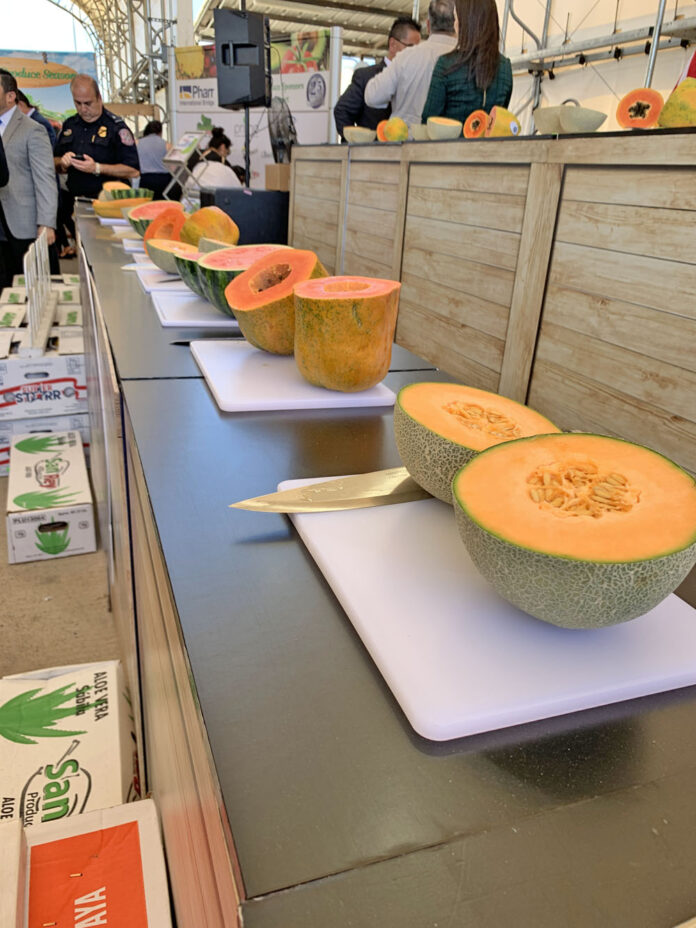PHARR — Tightly connected at their core, two pillars of trade in North America celebrate their 25th anniversary this year. But their futures are not in lockstep.
The North American American Free Trade Agreement, implemented in 1994, has hit snags under President Trump, who has sharply criticized the deal and has threatened to pull out of the agreement altogether, before his trade negotiators last year reached a deal on an updated trade agreement, but it has yet to be approved by the United States and Canadian bodies of Congress.
And there’s the Pharr-Reynosa International Bridge, which opened for business in 1994, and has grown significantly to now become the top produce port of entry in the country, with 60% of the avocados that enter the U.S. from Mexico crossing the bridge in Pharr. That statistic was not lost on Thursday’s speakers at the annual launch of the produce season at the bridge.
Most people, state Sen. Juan “Chuy” Hinojosa said, don’t know the genesis of fruits and vegetables they buy at H-E-B.
“It’s important to educate them,” Hinojosa said during his keynote address underneath an awning at the bridge, where displays of fruits and vegetables surrounded Hinojosa and dozens of local, state and federal officials, produce industry stakeholders from the U.S. and Mexico and a cake celebrating the bridge’s 25th year.
This milestone year for the bridge has not come without challenges, such as President Trump’s threat to close the U.S.-Mexico border in March, followed by the reassignment of hundreds of federal authorities from ports of entry like Pharr’s to assist the Border Patrol with immigration issues.
Those series of events led to bottlenecks at the bridge, with passenger vehicles and commercial trucks backing up for more than 10 hours at some points in April and May. Pharr Bridge Director Luis Bazan and the staff at the bridge sought ways to alleviate the backed up traffic, which had already been an issue for years, and changed the hours of operation for certain vehicles.
But trucks continued to cross the bridge in droves this summer, including most recently in August, where 53,662 commercial trucks crossed from Pharr into Mexico, up nearly 3,500 trucks from August 2018.
Pharr officials are hoping this is the result of a marketing push from the bridge
“We’ve been in a very aggressive travel schedule,” Bazan said in August when announcing those numbers, citing various meetings and conferences he and other bridge staff have attended this year in Mexico and the United States. “This is all intended to promote the bridge, specifically as we get closer to starting construction of these projects.”
Various construction projects at the bridge are expected to be staggered in order to not overly disrupt truck traffic, which is expected to continue ballooning at the bridge, as it has for several years.
The future of a new trade deal for North America isn’t as clear. While politics in Washington, D.C., are expected to mostly likely determine the treaty’s fate, the bridge will likely still be around.
“We started on the basis of NAFTA, which is now being negotiated,” Bazan said Thursday, before mentioning the revamped deal’s prospects in Congress. “We’re hoping to get there by the end of the year. If not, we’ll see what happens next year.”





